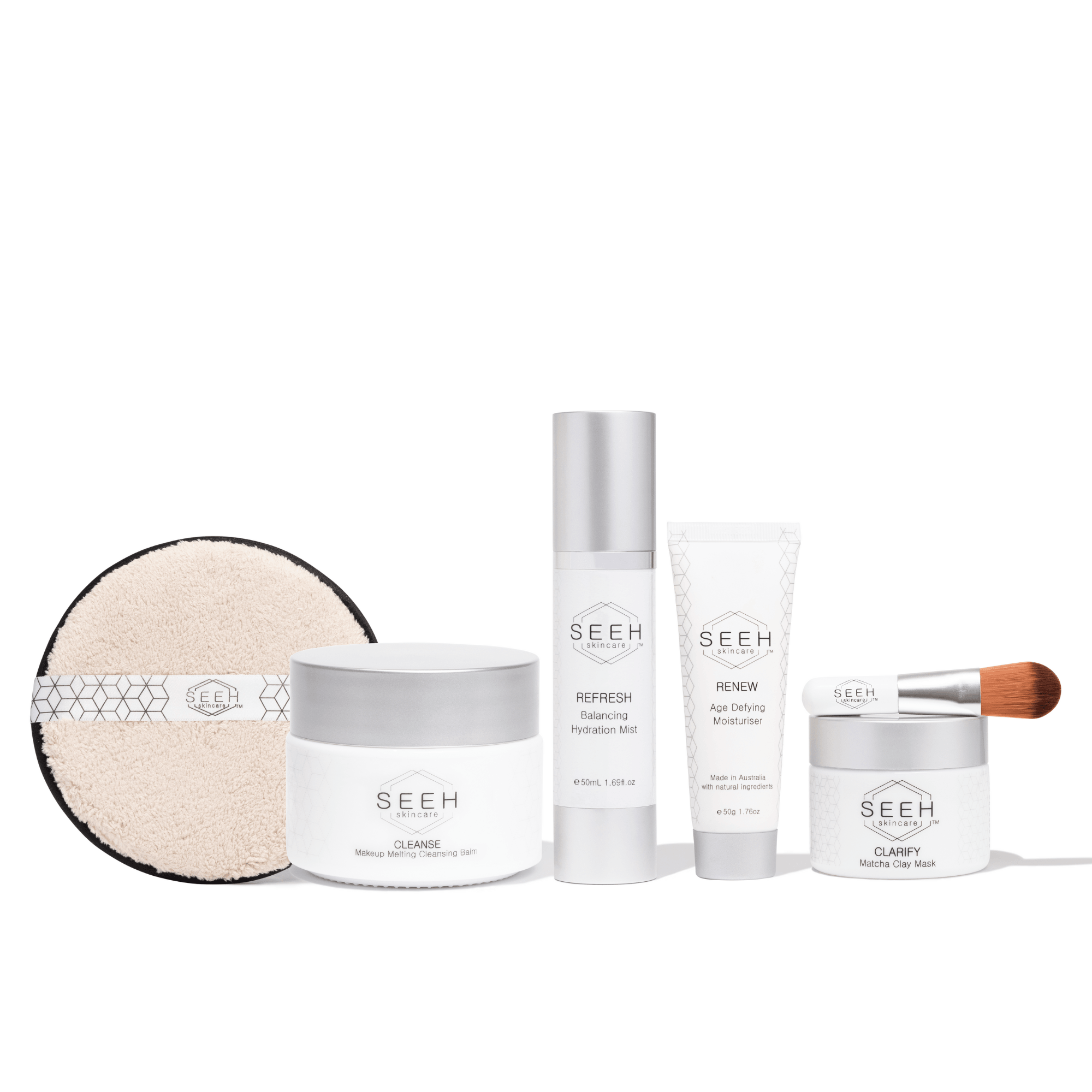Reducing your toxic load
We come into contact with toxic chemicals every day - we breathe them, swallow them and apply them to our bodies. From food to skincare, household products and environmental toxins.While our bodies do an amazing job at handling and expelling toxins to keep us healthy, these chemicals add up, day after day. The accumulation of these chemicals is called toxic load.
Long-term exposure and an ever increasing toxic load can lead to all kinds of problems from persistent skin allergies and irritations to organ damage and reproductive health issues.
Making smart choices about your skincare and beauty products is one way to lighten your toxic load. Check out this list of nasties you want to avoid in your skincare and why!
Sodium Lauryl Sulfate (SLS) / Sodium Laureth Sulfate (SLES)
You’ve probably heard of these skincare bad guys!SLS and SLES are commonplace in many commercial skincare and beauty products. They’re both surfactants that act as cleansing agents and are often used to create the foaming effect in cleansers.
There are several problems with SLS and SLES. First, studies have linked them to irritation of the eyes, skin, and lungs, especially when used frequently over a long period. If you have sensitive skin, SLS and SLES are likely to trigger a reaction.
Second, they are incredibly drying for the skin and should absolutely be avoided if you have dry skin or chronic skin conditions like eczema, contact dermatitis, or psoriasis.
SLS allergies are also way more common than you think. In fact it was an allergy to SLS ridden toothpaste and cleansers that inspired me to create SEEH Skincare in the first place. You can read more about that here.
Synthetic fragrance
Did you know that when brands claim the exact chemicals they use in a fragrance are a trade secret, those chemicals don’t have to appear on the ingredients list?This means that seeing the word ‘fragrance’ tells us zero about the chemicals that make up the fragrance. There could be hundreds of them!
A lack of transparency around fragrance makes it a big one to avoid. Plus, it can be highly irritating for sensitive skin and rosacea.
Parabens
Used as preservatives, research tells us we have big reasons to skip these nasties in skincare.
Paraben-related concerns include the possible disruption to the endocrine system, which can interfere with reproduction and trigger disturbances in the immune and nervous system function.
Parabens may also mimic estrogen which could increase the risk of breast cancer. Studies show they may affect healthy breast cells which could lead to abnormal, cancerous growth.
Add allergies and thyroid problems to the other health risks posed by parabens and it’s clear why we don’t want them in our skincare.
Phthalates
A family of industrial chemicals, phthalates can adversely influence the endocrine system and healthy functioning of multiple organs. Over time, research shows this influence can impact pregnancy, child growth and development, and reproductive systems in both young children and teens.
Research has also linked exposure to phthalates during adolescence to attention deficit disorder in teenagers. Not the kind of ingredients you or your family want to be rubbing into skin on the daily!
Triclosan
Scan the ingredients list of products like cleansers, body washes and soaps and you might spy triclosan.
Used as an antibacterial and antifungal agent, this ingredient is designed to kill bacteria on the skin but it may do more harm than good. Research shows exposure to the hormone-disrupting nature of triclosan could possibly contribute to the development of breast cancer.
It has also been linked to thyroid disruption and can lead to contact dermatitis or skin irritation.
Oxybenzone in chemical sunscreens
Oxybenzone isn’t great for your skin or the environment.A key ingredient in chemical sunscreen, oxybenzone can trigger contact and photo contact allergy reactions, possibly cause endocrine disruption and has been linked to Hirschsprung's disease.
Oxybenzone also wreaks havoc on marine environments. It enters the ocean, either via waterways or off swimmers' skin, where it damages early developing coral. It increases the coral’s susceptibility to bleaching; DNA damage; abnormal growth; and causes gross deformities.
Mineral sunscreen is a kinder choice for your health and our marine life. Key ingredients, zinc oxide and / or titanium dioxide, are natural and won’t cause personal or environmental harm.
This isn’t a complete list of skincare nasties to avoid, we’ve picked a few of the top offenders.
I highly recommend getting your Google on and diving into more research on the topic of toxic ingredients in skin and personal care products. The more you know, the more informed decisions you can make for yourself and your family!
I’m happy to say you’ll never find any of these nasties in the SEEH range.
We’re transparent about the purity, potency, and effectiveness of every ingredient we use - you can find a list of them right here.
Kim xx






































































